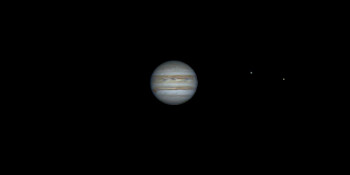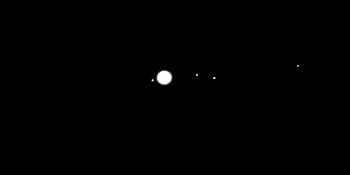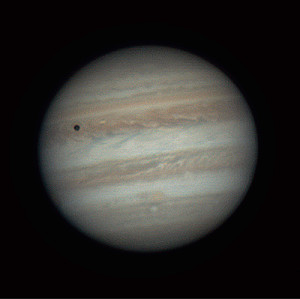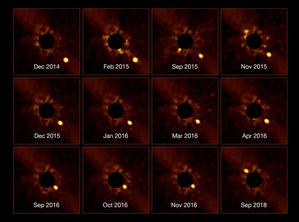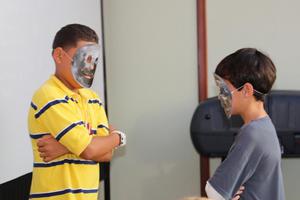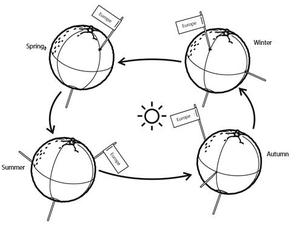Glossary term: 軌道
Description: 軌道是在一個系統中運動的天體圍繞該系統質心的軌跡,由系統中天體之間相互施加的萬有引力引起。在太陽系等系統中,中心天體的質量遠大於其他天體,質心位於質量最大的天體(在太陽系中為太陽)內部或其附近。在雙星系統中,恆星軌道的質心通常位於兩顆恆星之間。
軌道的形狀通常呈橢圓形,系統的質心位於橢圓的一個焦點上。軌道的大小和形狀由橢圓的半長軸和離心率決定。離心率越大的軌道橢圓度越高。太陽系中大多數行星軌道的離心率都非常接近零,例如金星(0.007)和地球(0.017)。而離心率較大的例外有水星(0.206)和矮行星冥王星(0.244)。
Related Terms:
See this term in other languages
Term and definition status: The original definition of this term in English have been approved by a research astronomer and a teacher The translation of this term and its definition is still awaiting approval
This is an automated transliteration of the simplified Chinese translation of this term
The OAE Multilingual Glossary is a project of the IAU Office of Astronomy for Education (OAE) in collaboration with the IAU Office of Astronomy Outreach (OAO). The terms and definitions were chosen, written and reviewed by a collective effort from the OAE, the OAE Centers and Nodes, the OAE National Astronomy Education Coordinators (NAECs) and other volunteers. You can find a full list of credits here. All glossary terms and their definitions are released under a Creative Commons CC BY-4.0 license and should be credited to "IAU OAE".
If you notice a factual or translation error in this glossary term or definition then please get in touch.
Related Media
木星的自轉,作者 Vishal Sharma,印度
Credit: Vishal Sharma/IAU OAE
License: CC-BY-4.0 Creative Commons 姓名標示 4.0 國際 (CC BY 4.0) icons
木衛影片2,Nicolas Hurez,Paul-Antoine Matrangolo,和Carl Pennypacker,美國
Credit: Nicolas Hurez,Paul-Antoine Matrangolo 和 Carl Pennypacker/IAU OAE
License: CC-BY-4.0 Creative Commons 姓名標示 4.0 國際 (CC BY 4.0) icons
木星、木衛一及其陰影,作者:Ralf Burkart,德國
Credit: Ralf Burkart/IAU OAE
License: CC-BY-4.0 Creative Commons 姓名標示 4.0 國際 (CC BY 4.0) icons
β Pictoris b的軌道
Credit: ESO/拉格朗日/SPHERE合作組織 credit link
License: CC-BY-4.0 Creative Commons 姓名標示 4.0 國際 (CC BY 4.0) icons
Related Activities
Measure the Solar Diameter
astroEDU educational activity (links to astroEDU website) Description: Hands-on activity to measure the Sun by using household materials.
License: CC-BY-4.0 Creative Commons 姓名標示 4.0 國際 (CC BY 4.0) icons
Tags:
Hands-on
, Scales
, Observing
, Measurement
Age Ranges:
12-14
, 14-16
, 16-19
, 19+
Education Level:
Middle School
Areas of Learning:
Social Research
Costs:
Low Cost
Group Size:
Group
Skills:
Communicating information
, Constructing explanations
, Using mathematics and computational thinking
Blue Marble in Empty Space
astroEDU educational activity (links to astroEDU website) Description: Students are taken on a virtual journey to outer space to experience that we live on a tiny planet that floats in a vast and empty space.
License: CC-BY-4.0 Creative Commons 姓名標示 4.0 國際 (CC BY 4.0) icons
Tags:
Life
, Hands-on
, Model
, Scales
, Distances
, ISS
Age Ranges:
6-8
, 8-10
Education Level:
Primary
, Secondary
Areas of Learning:
Interactive Lecture
, Modelling
Costs:
Low Cost
Duration:
30 mins
Group Size:
Group
Skills:
Asking questions
, Communicating information
, Developing and using models
Lunar Day
astroEDU educational activity (links to astroEDU website) Description: Through a fun-learning activity, understand why moon always keeps the same face towards Earth.
License: CC-BY-4.0 Creative Commons 姓名標示 4.0 國際 (CC BY 4.0) icons
Tags:
Lunar day
Age Ranges:
4-6
, 6-8
Education Level:
Primary
, Secondary
Areas of Learning:
Modelling
, Structured-inquiry learning
Costs:
Free
Duration:
30 mins
Group Size:
Group
Skills:
Analysing and interpreting data
, Asking questions
, Communicating information
, Constructing explanations
, Developing and using models
Day and Night in the World
astroEDU educational activity (links to astroEDU website) Description: Compare diurnal and nocturnal animals and experiment with day and night.
License: CC-BY-4.0 Creative Commons 姓名標示 4.0 國際 (CC BY 4.0) icons
Tags:
Life
, Model
, Animals
, Day and night
Age Ranges:
6-8
, 8-10
Education Level:
Primary
Areas of Learning:
Interactive Lecture
, Modelling
, Social Research
Costs:
Low Cost
Duration:
1 hour
Group Size:
Group
Skills:
Asking questions
, Constructing explanations
, Developing and using models
, Planning and carrying out investigations
Seasons Around the World
astroEDU educational activity (links to astroEDU website) Description: Demonstrate the seasons on Earth using a model.
License: CC-BY-4.0 Creative Commons 姓名標示 4.0 國際 (CC BY 4.0) icons
Tags:
Hands-on
, Model
Age Ranges:
6-8
, 8-10
, 10-12
Education Level:
Middle School
, Primary
Areas of Learning:
Modelling
, Social Research
Costs:
Medium Cost
Duration:
45 mins
Group Size:
Group
Skills:
Analysing and interpreting data
, Asking questions
, Constructing explanations
, Developing and using models
, Planning and carrying out investigations
